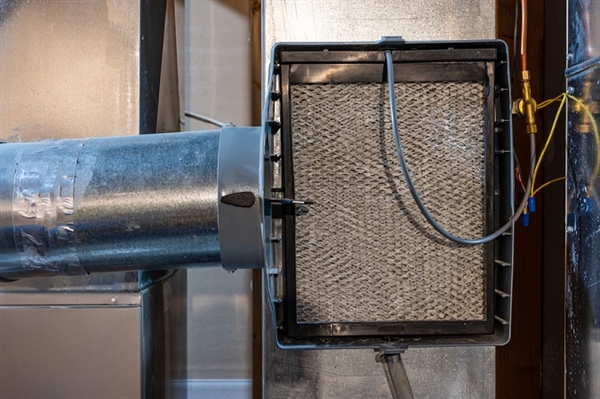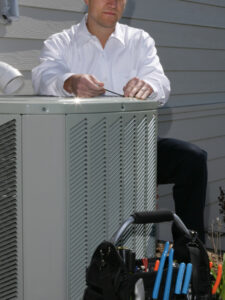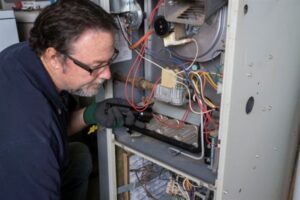It’s not only the temperature that can make the air surrounding your home feel uncomfortable – humidity levels play just as important of a role.
Usually, in the colder months, humidity levels are lower compared to the rest of the year. This can lead to dryness and the spread of viruses. Fortunately, you can prevent these problems from arising by investing in a whole-house humidifier.
Let’s discuss the basics of humidifiers: how they work, the different types, and why you might consider installing one!
What Are the Types of Whole-House Humidifiers?
There are three types of humidifiers that add humidity and improve the air quality of your home.
1. Bypass Humidifiers
A bypass humidifier helps your home’s air by way of your furnace. The warm air from the furnace is directed towards a water tray. During the cycle, the warm air picks up moisture from the tray and then is carried through your home’s ducts into different rooms.
This type of humidifier is great if you already have a furnace system installed. One caveat is that the water supply for this type of humidifier needs to be drained.
2. Steam Humidifiers
The steam humidifier is the most precise and efficient of the three humidifiers listed. The steam humidifier is an electric-powered humidifier that produces a current that heats the water and evaporates it.
This leads to moisture-heavy air that is spread throughout the surroundings, leading to a balance in the indoor humidity levels. It is one of the most expensive choices and also requires regular maintenance.
3. Fan-Powered Humidifiers
Fan-powered humidifiers are similar to bypass humidifiers in that the air still passes through a water tray. However, fan-powered uses extra force from the fan to increase the amount of water that is evaporated into the air. Fan-powered humidifiers can produce up to a gallon of humidified air a day, as well as being more energy efficient.
How Does a Whole-House Humidifier Work?
A whole-house humidifier is different from a portable humidifier you can place in your room. A whole-house humidifier adds moisture to the surrounding air by raising indoor humidity levels throughout the whole house rather than just a single room or space.
The humidifier is connected to your ductwork near your furnace, either on the return or supply end. The whole-house humidifier is also connected to your water supply.
When the humidity drops to a certain level, the controller waters the evaporator panel. The liquid then turns into water vapor, which spreads throughout the house.
Why Should You Install a Whole-House Humidifier?
If you’re still wondering why you should install a whole-house humidifier, then Quality Systems Heating & Cooling has more reasons to share. Whole house humidifiers are basically maintenance-free, which means less time working on home projects and more time doing what you love to do.
They can also help prevent illnesses and germs from spreading through your home, making the rest of your family sick. You’ll breathe easier at night, literally, if you install a whole-house humidifier.
After all, when you’re home, you want to be comfortable. Whole-house humidifiers can increase your home’s comfort by relieving allergies, softening your skin and hair, allowing for better sleep, reducing static electricity from dry air, and helping alleviate some health concerns like viruses and asthma.
Breathe Better Air With Quality Systems Heating & Cooling
For solutions to your heating, cooling, and overall air quality, choose Quality Systems Heating & Cooling. If you’re ready to improve the comfort of your home, we can help you by installing a whole-house humidifier to work with your existing furnace or HVAC system.
Receive a quote online or give us a call at 952-226-2665 today!





